 | Tharushan Nirmalachandran, 33, of Île-Bizard, and a 38-year-old man from Ontario were arrested and were scheduled to be charged at the Montreal courthouse.
Cops landed 38 kg of cocaine, 9 kg of meth, 5 kg of purple fentanyl, and 28,000 speed tablets. Cops also discovered nearly $1 million in cash. Nirmalachandran faces a total of nine charges. Nirmalachandran bought 15 months in federal prison for conspiracy to commit bank fraud in the US in 2020. They used cloned debit cards at ATMs. |  |
Wednesday, June 21, 2023
Tharushan Nirmalachandran busted for lots of drugs
Ecuador shrimp mafia - update
 | A second death in 2023 has been recorded in Ecauador as robbery, extortion, assault, and murder of shrimp farm workers by armed gangs feeding off the lucrative industry rises. In the last three years organized crime groups have murdered seven shrimp farmers, injured at least 60, and stolen shrimp and equipment worth millions. Authorities have proven unable to protect the shrimp sector workers. The entire shrimp sector in the country is under constant attack. Ecuador’s shrimp exports reached a record $3.65 billion in 2021, but that success has also brought organized crime that is beyond control of authorities. |
  | Ecuador’s shrimp industry is a rising economic star, globally. The sector now produces more than $5b in annual exports and has solidified its position as the country’s second-largest industry after oil. China imports almost 900,000 tons of shrimp, of which 70% comes from Ecuador. The Ecuadorian shrimp industry continues to battle rising organized crime attacks. Criminals intercepted a boat working in the shrimp sector in the Gulf of Guayaquil. The attack led to the vessel's operator being taken to a medical facility after receiving first aid. |  This year there have been 48 criminal incidents involving the shrimp sector, leaving 31 people injured. |
 | A trade body is working with the police and navy to concentrate their efforts in areas such as kilometre 26 of the Naranjal road, the Gulf of Guayaquil (Puerto Roma and Punta Piedra) and the Jambelí Archipelago.
Compared to the same period last year, theft from sites has increased by 35%, and feed theft by 100%. At the same time the number of injured has doubled. | 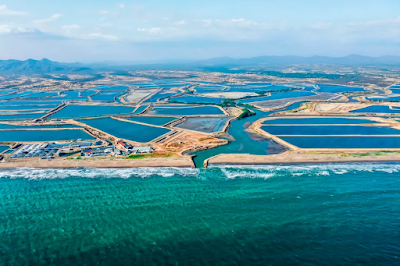 |
QuadrigaCX - Gerald Cotten - BC forfeiture wants stolen loot
 | Gerald Cotten, a co-founder of QuadrigaCX, died mysteriously in India in 2018. Co-founder Michael Patryn benefited from using QuadrigaCX client money through unauthorized trades and falsifying documents says a lawsuit filed by the province. They want to keep more than $600k in cash, gold bars, watches and jewellery from a safety deposit box and a CIBC bank account in Vancouver. The safety deposit box contained $250,200 in cash and 45 gold bars. It also contained four watches, including two Rolexes, jewellery, and a Ruger .45 and two loaded magazines. The box also contained a birth certificate, name change certificate, credit cards and cheques in Patryn’s name. The QuadrigaCX fraud was over $250m. |  Michael Patryn, former name, Omar Dhanani. |
 QuadrigaCX was one of Canada’s biggest cryptocurrency exchanges. | QuadrigaCX’s court-appointed auditor revealed the addresses for the cryptocurrency exchange’s offline Bitcoin wallets. The cold storage wallets are empty – aside from $400k worth in Bitcoin. The news comes after the exchange said that it owed customers $134m worth of cryptocurrency.  |  Founder Gerald Cotten died as a result of complications of Crohn’s disease while travelling to India with his wife on December 9 2018. |
 | There are calls to probe Cotten’s sudden and curious death. A death certificate issued by India was quickly dismissed as “worthless” by QuadrigaCX customers who demanded to see Canadian documents. The Indian certificate had Cotten’s name spelled incorrectly, adding fuel to conspiracy theories.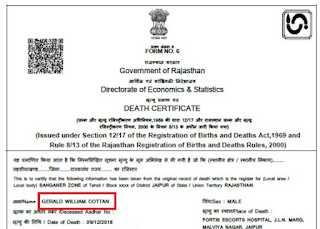 |  |
Louis 'The Coin' Colavecchio
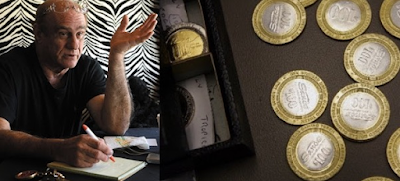 Colavecchio’s enterprise was described by the Secret Service as the largest coin counterfeiting case in history. | Louis 'The Coin' Colavecchio earned his nickname for the immense number of counterfeit coins he created over the years. He was one of the first to successfully produce counterfeit coins able to deceive the software inside slot machines into thinking they were real. He was able to steal huge amounts from casinos across Atlantic City and surrounding areas without ever having to wager his own money. During the counterfeiting process, Colavecchio was meticulous about every detail that went on the coin. He was nervous the first time he went to Caesar’s Palace with this fake tokens, but they worked flawlessly. | 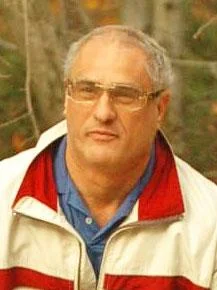 |
 Colavecchio was able to play the slots for hours. He made thousands of dollars a night, all of which he used to maintain his prestigious lifestyle. | Caesar’s took their annual coin inventory and noticed they had a large surplus of $10 slot machine coins. They discovered that the extra coins were counterfeits. They sent word to casinos in the area; Bally’s Park Place and Showboat Casinos checked for fake tokens and immediately found them. The security of Caesar’s Palace and all casinos in Atlantic City were on the lookout. When Colavecchio arrived the following weekend his behavior caught the attention of the guards. They watched him for hours, identifying which machines he was using. |  They opened up the machines and found counterfeits. |
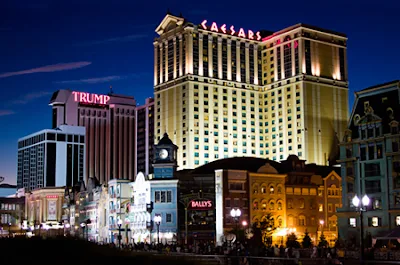 | The coin was busted. The police found 750 pounds of counterfeit coins in his car. Casinos filed charges against Colavecchio, who agreed to tell them how he had made the tokens in exchange for a lighter sentence. He was sentenced to a total of seven years in prison. The Providence Journal reported that after he spent more than two years in federal prison, he was paid $18,000 by the feds as a consultant to explain why his manufacturing dies outlasted those of the U.S. Mint.
Today most casinos don’t use coins for their slot machines. Most machines are electronic and work off of a reloadable card or paper vouchers that can be transferred to cash. We can thank Louis 'The Coin' Colavecchio. Louis Colavecchio died in 2020 at age 78. |
Punjab cop operation ‘Cage the Queen Bee’ - sunk by Frooti
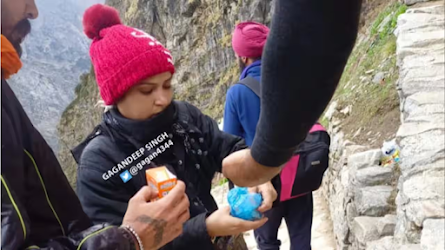 | Daaku Haseena whose real name is Mandeep Kaur, and her husband Jaswinder Singh were arrested at Hemkund Sahib in Uttarakhand's Chamoli. When cops learned of their travel plans to Hemkunt Sahib, they laid a trap for them and started distributing Frooti to the pilgrims. When Kaur and her husband were offered the drink, they uncovered their faces, leading to their identification and arrest. Cops recovered Rs 21 lakh of the couple's loot. The 10 Rupee Frooti ($0.20) is a mango flavoured drink popular in India. It is made with natural flavours and mango concentrate. |  |
 Among the busted is Manjinder Singh Mani, an employee of CMS Info Systems Ltd for four years. The arrest took place in Uttarakhand, where the couple had been hiding. | Punjab cops lassoed Mandeep Kaur, 'Mona', and her husband Jaswinder Singh. Punjab’s biggest heist, their daring robbery occurred in the office of CMS Info Systems Ltd, a cash management firm based in Ludhiana. It was led by Queen Bee Mandeep Kaur. Thieves landed $1m.
 |
Mohammad 'Little Crazy' Hamzy back on Sydney streets
 | Mohammad 'Little Crazy' Hamzy, 37, was released from Macquarie Correctional Centre in Wellington. Hamzy, who has been caged since 2015 over the death of another gangster, is emerging into a different world. Five of his close relatives have been gunned down. The slayings overturned the Hamzy clan's dominance on the streets, leaving the Alameddine crime clan and Comanchero bikies holding power in the city's underworld. Its thought 'Little Crazy' could be honour bound to exact revenge over the murders of his cousins Bilal Hamze, Mejid Hamze, Ghassan Amoun and relatives Toufik Hamze and his 18-year-old son, Salim. He was originally sentenced for shooting two men in 2012. |
Hamzy was stabbed in 2020. Its said the gangster has many enemies and there is a bounty on his head. His cousin Bassam Hamzy founded the 'Brothers 4 Life' gang in prison after he converted to radical Islam.  |
Tuesday, June 20, 2023
Patrice Runner nailed in $175m mail fraud
 | Patrice Runner, 57, directed a ruthless psychic mail scheme for over two decades. It was one of the largest -- if not the largest -- scam of its kind ever, the DoJ said. Runner ran a direct mail operation based in Montreal using the business name 9097-9394 Quebec Inc. He sent mailings to millions of Americans that claimed to be personal letters from popular psychics. In the letters, the purported psychics claimed to have seen a "personalized vision" of the elderly or ailing target. They promised to help that person achieve vast wealth and happiness or overcome illness, all for a fee, of course. Once an initial payment was made, the victims were "bombarded with dozens of additional letters". Some victims were directed to send anywhere from $5 to $50 for "unique and supernatural objects" that were actually cheap Chinese trinkets. Spanish cops arrested Runner in his Ibiza villa in April 2019. He was extradited to the U.S. in December 2020. |
Montenegrins busted importing cocaine to Oz
 | The Australian Federal Police (AFP) charged two senior crew members from a bulk cargo carrier for their roles in the importation of 850kg of cocaine into Australia. The men – the vessel’s master and chief engineer, both from Montenegro – faced the Perth Magistrates Court. The master was Milan Begović and the chief engineer as Radovan Vujičić. They were posted on the bulk cargo carrier ST Pinot. The pair planned to drop the load overboard off the Fremantle coast to be collected by another group. The master instructed crew members to alter the vessel’s course as it neared Fremantle Port to rendezvous with the vessel. |
 Milan Begović, Radovan Vujičić. | The planned exchange failed. The men tried to conceal the drugs by filling the ballast tank that the drugs were hidden in with water and instructed the crew to backdate logs and provide false information to authorities. The cocaine was found on the 58,000-dwt supramax St Pinot at Kwinana Bulk Terminal in Western Australia. The haul, with a street value of at least $375m, is among the country’s largest. |
Sunday, June 18, 2023
G&R Recyclage - Robert and Gary Gabriel revisited
 The process for remediation of the fouled land has stalled and could remain that way for years given lack of governance. | Dysfunctional indian leadership is delaying the clean-up of Robert and Gary Gabriel's toxic dump at Kanesatake. A dispute between Council Grand Chief Victor Bonpsille and his sister Chief Valerie Bonspille, and four other chiefs in the Kanien'kehá:ka has delayed the transfer of the privately owned land back to the community so the cleanup can continue. Four chiefs: John Canatonquin, Brant Etienne, Amy Beauvais, and former grand chief Serge Otsi Simon banded together to support the Gabriels. |  Former grand chief Serge Otsi Simon. Chief Denise David did not sign the dissident resolution. |
 | Contaminants were found in the water near a dump in Kanesatake 5 years ago. Opened in 2015 as a recycling center for industrial garbage, it has accumulated mountains of waste on a strip of Mohawk land. The Ministry of the Environment doesn't set foot there at the demand of Robert Gabriel.
|
 Gary Gabriel | In 2020, the Ministry revoked the company's license and cracked down on truckers dumping loads. The traffic stopped, but the waste remains. The issue has been known for years but Quebec and Ottawa fear to tred on indigenous territories. Its thought it would cost $100m to clean up the site. Brothers Robert and Gary Gabriel were members of the Warriors during the 1990 Oka crisis. In 2005, they were convicted of forcible confinement and participation in a riot, after the house of Grand Chief James Gabriel and the local police station burned down. Robert Gabriel was the head of the 'very violent' organization. |  |
Richie 'The Boot' Boiardo home for sale
 | For about $2 million you can own a former home of Ruggiero “Richie The Boot” Boiardo at 4 Twilight Court in Livingston. He was the head of the New Jersey faction of the Genovese crime family. He was also an inspiration for David Chase's "The Sopranos." The home was his daughter's and sits back from the road at the end of a long, winding driveway. Richie the Boot bought the property in 1939. He lived there until his death in 1984 at age 93. |  Sopranos creator David Chase said when he was a child, his family visited relatives in Newark "with connections to a prominent mob family in Livingston." |
 Ruggiero Boiardo was boss until he died. | Years later, Chase admitted that the Tony Soprano character in 'The Sopranos' was modeled after the Boiardos.
 |
 | Things weren’t going well for the Boiardos in the late ’60s. IRS agents were investigating The Boot, and Life magazine ran an exposé on his “brazen empire of organized crime” and 30-acre estate in Livingston, NJ. The Boiardos ran Newark with an iron hand. For decades, they controlled the city’s underworld and benefited from racketeering, loan-sharking, theft, gambling and no-show jobs at the Port of Newark. In 1969 Richie the Boot was convicted of conspiracy to violate gambling laws. | 
|
 | Richie The Boot became increasingly detached and paranoid when he stepped aside. His son, Tony Boy, rose quickly in the mob but lacked The Boot’s sharp cunning and many thugs disliked him. Tony Boy died of a heart attack in 1978, at 64. The Boot died six years later due to heart failure. By then the Boiardo crime family was finished in Newark. |  |
Saturday, June 17, 2023
Water crisis in Gurugram, ‘mafia’ making a killing
 | Gurugram is a city of 1.1m southwest of New Delhi in India. With temperatures soaring, a water crisis has gripped Gurugram again. Battling low pressure, ancient infrastructure and decreased supply, much of the city is now dependent on mafia water tankers, which are costing a fortune. Water costs between Rs 1,500 and Rs 5,000 per tanker in some areas. ($20 to $65) The water mafia has graduated from illegal borewells to breaching water supply lines. 20 sites at 39 locations have damaged pipelines, leading to water shortages. "The water mafia is having its own way and are overcharging us and refusing to supply till we pay. How will we pay?" |   Private tanker operators run their business from farmlands, where illegal borewells suck groundwater dry. Gurugram Metropolitan Development Authority (GMDA) said there is a supply shortage of about 70 million litres per day. |
See ----->Karachi’s water mafia
Subscribe to:
Posts (Atom)

